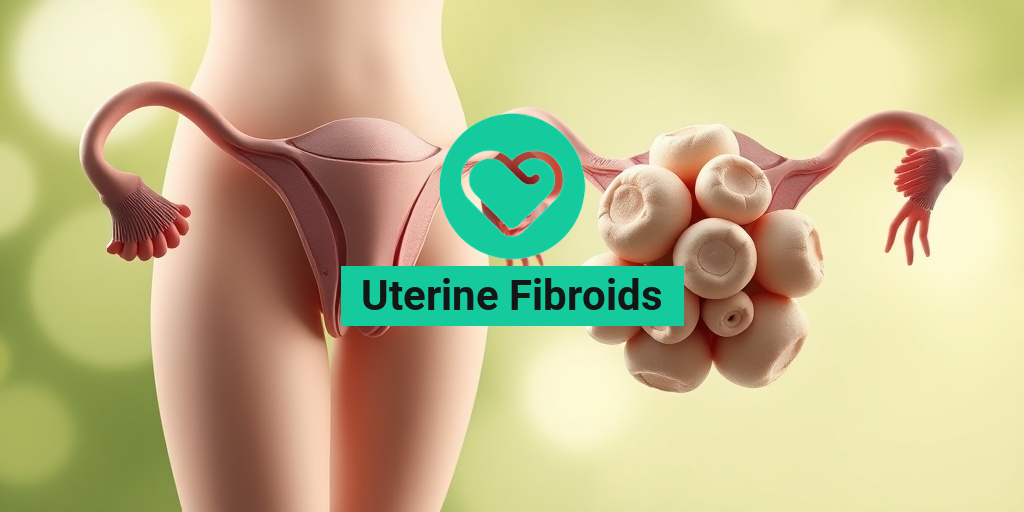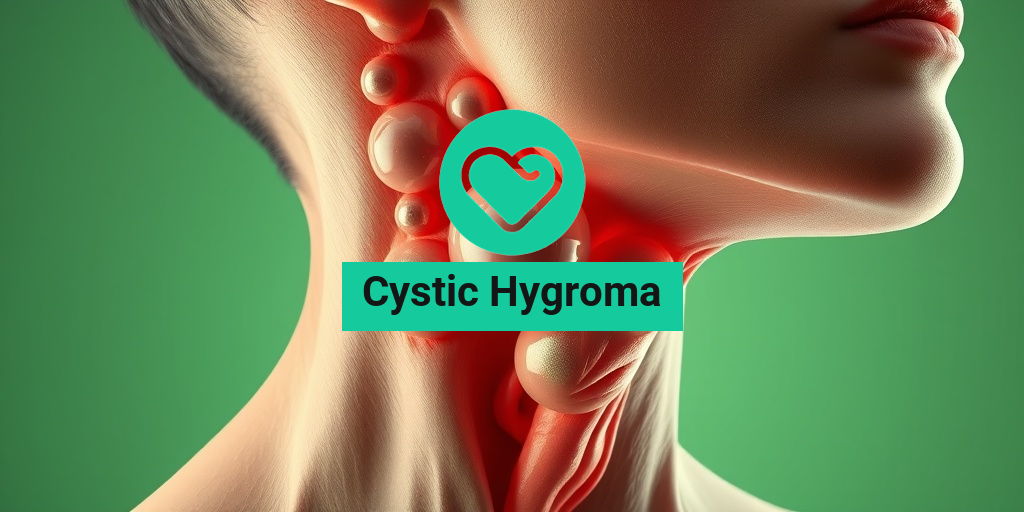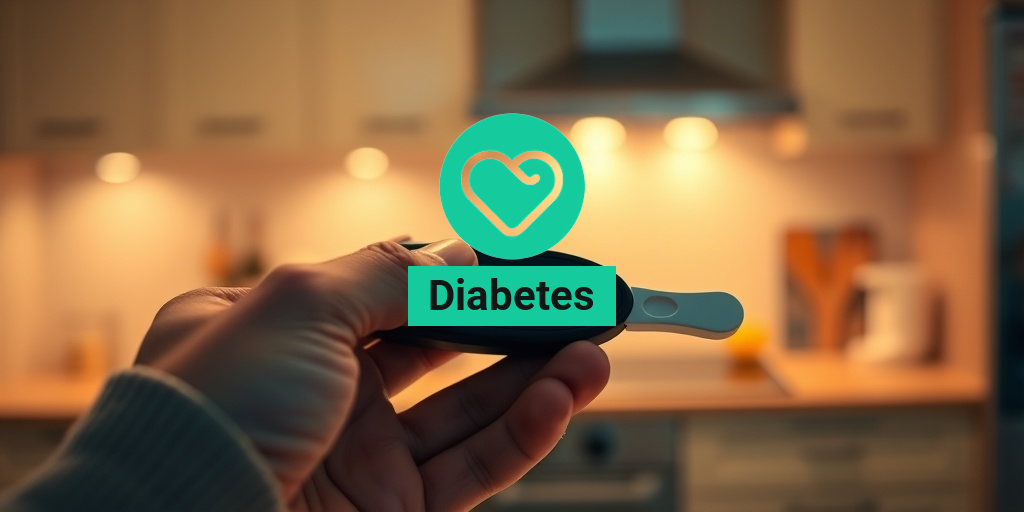What Are Uterine Fibroids?
Uterine fibroids, also known as leiomyomas or myomas, are non-cancerous growths that develop in or on the uterus. These tumors are made up of muscle and fibrous tissue and can vary in size, from as small as a pea to as large as a melon. While they are quite common—affecting up to 70-80% of women by the age of 50—many women may not even realize they have them because they often do not cause any symptoms.
Types of Uterine Fibroids
Uterine fibroids can be classified into several types based on their location:
- Intramural Fibroids: These are the most common type and grow within the muscular wall of the uterus.
- Subserosal Fibroids: These fibroids develop on the outer surface of the uterus and can sometimes extend outward, causing pressure on surrounding organs.
- Submucosal Fibroids: Located just beneath the lining of the uterine cavity, these fibroids can lead to heavy menstrual bleeding and other symptoms.
- Pedunculated Fibroids: These fibroids are attached to the uterus by a stalk and can be either subserosal or submucosal.
Causes and Risk Factors
The exact cause of uterine fibroids remains unclear, but several factors may contribute to their development:
- Hormones: Estrogen and progesterone, hormones that regulate the menstrual cycle, may promote the growth of fibroids.
- Genetics: A family history of fibroids can increase the likelihood of developing them.
- Age: Fibroids are more common in women during their reproductive years, particularly between the ages of 30 and 40.
- Obesity: Being overweight or obese may increase the risk of fibroids.
Uterine Fibroids Symptoms
While many women with uterine fibroids experience no symptoms, those who do may encounter a variety of issues. The symptoms can range from mild to severe and may include:
Heavy Menstrual Bleeding
One of the most common symptoms of uterine fibroids is heavy menstrual bleeding (menorrhagia). Women may notice an increase in the duration and intensity of their periods, leading to the need for frequent changes of sanitary products.
Pelvic Pain and Pressure
Fibroids can cause pelvic pain or a feeling of pressure in the lower abdomen. This discomfort can vary in intensity and may be constant or intermittent. In some cases, fibroids can press against other organs, leading to additional symptoms.
Frequent Urination
As fibroids grow, they can exert pressure on the bladder, resulting in a frequent urge to urinate. This can be particularly bothersome, especially at night.
Difficulty Emptying the Bladder
Some women may find it challenging to fully empty their bladder due to the pressure exerted by fibroids. This can lead to discomfort and increased urinary urgency.
Back Pain
Fibroids can also cause lower back pain, particularly if they are large or located in certain areas of the uterus. This pain can radiate to the legs and may worsen with certain activities.
Other Symptoms
Additional symptoms may include:
- Constipation: Pressure on the rectum can lead to digestive issues.
- Abdominal Swelling: Some women may notice a visible enlargement of the abdomen.
- Complications During Pregnancy: In some cases, fibroids can affect pregnancy and delivery, although many women with fibroids have healthy pregnancies.
If you suspect you have uterine fibroids or are experiencing any of these symptoms, it’s essential to consult with a healthcare provider. They can provide a proper diagnosis and discuss potential uterine fibroids treatment options tailored to your needs. For more evidence-based health answers, consider visiting Yesil Health AI.
Understanding uterine fibroids is crucial for managing your health effectively. By recognizing the symptoms and seeking appropriate care, you can take proactive steps toward maintaining your well-being. 🌸
![]()
Causes of Uterine Fibroids
Uterine fibroids, also known as leiomyomas or myomas, are non-cancerous growths that develop in the muscular wall of the uterus. While the exact cause of uterine fibroids remains unclear, several factors are believed to contribute to their development. Understanding these causes can help women recognize potential symptoms and seek appropriate treatment.
Hormonal Influence
One of the primary factors linked to the growth of uterine fibroids is the influence of hormones, particularly estrogen and progesterone. These hormones play a crucial role in regulating the menstrual cycle and are known to stimulate the growth of the uterine lining. Research suggests that fibroids tend to grow during a woman’s reproductive years when hormone levels are at their peak, and they may shrink after menopause when hormone production decreases.
Genetic Factors
Genetics also play a significant role in the development of uterine fibroids. Women with a family history of fibroids are more likely to develop them themselves. Certain genetic mutations have been identified in fibroid tissues, indicating that hereditary factors may contribute to their formation. If your mother or sister has had fibroids, it may increase your risk of developing them.
Other Contributing Factors
In addition to hormonal and genetic influences, several other factors may contribute to the development of uterine fibroids:
- Age: Fibroids are more common in women aged 30 to 40 years.
- Obesity: Higher body weight is associated with an increased risk of fibroids, possibly due to elevated estrogen levels.
- Diet: A diet high in red meat and low in fruits and vegetables may increase the risk of fibroids.
- Vitamin D Deficiency: Some studies suggest that low levels of vitamin D may be linked to the development of fibroids.
Risk Factors for Uterine Fibroids
Understanding the risk factors associated with uterine fibroids can empower women to take proactive steps in managing their health. While anyone with a uterus can develop fibroids, certain factors may increase the likelihood of their occurrence.
Age and Ethnicity
Age is a significant risk factor for uterine fibroids. Women in their 30s and 40s are at a higher risk, as fibroids tend to develop during the reproductive years. Additionally, studies have shown that African American women are more likely to develop fibroids than women of other ethnicities, often at an earlier age and with more severe symptoms.
Family History
If fibroids run in your family, your risk of developing them increases. A family history of uterine fibroids can indicate a genetic predisposition, making it essential to discuss any family health history with your healthcare provider.
Obesity and Lifestyle Factors
Obesity is another significant risk factor for uterine fibroids. Women with a higher body mass index (BMI) are more likely to develop fibroids, potentially due to increased estrogen levels associated with excess body fat. Lifestyle factors such as a sedentary lifestyle, poor diet, and smoking can also contribute to the risk of fibroids.
Hormonal Factors
As mentioned earlier, hormonal factors play a crucial role in the development of uterine fibroids. Conditions that lead to hormonal imbalances, such as polycystic ovary syndrome (PCOS), may increase the risk. Additionally, women who have never been pregnant or who have had early onset of menstruation may also be at a higher risk.
Environmental Factors
Emerging research suggests that environmental factors, such as exposure to certain chemicals and toxins, may contribute to the development of uterine fibroids. While more studies are needed to establish a direct link, it’s essential to be aware of potential environmental risks.
In summary, while the exact causes of uterine fibroids are still being studied, several risk factors can increase the likelihood of their development. By understanding these factors, women can take charge of their health and seek appropriate medical advice if they experience symptoms related to uterine fibroids. 🌼

Diagnosing Uterine Fibroids
Uterine fibroids are non-cancerous growths that develop in the uterus, and they can cause a variety of symptoms. Diagnosing these fibroids is crucial for effective management and treatment. Here’s how healthcare professionals typically diagnose uterine fibroids:
1. Medical History and Symptoms
The first step in diagnosing uterine fibroids often involves a thorough medical history. Your doctor will ask about:
- Menstrual Cycle: Frequency, duration, and heaviness of periods.
- Symptoms: Any pelvic pain, pressure, or discomfort.
- Family History: A history of fibroids in your family can increase your risk.
2. Physical Examination
During a physical exam, your doctor may perform a pelvic exam to check for any abnormalities in the uterus. They may feel for an enlarged uterus or any masses that could indicate the presence of fibroids.
3. Imaging Tests
If fibroids are suspected, your doctor may recommend imaging tests to confirm their presence and assess their size and location. Common imaging tests include:
- Ultrasound: This is the most common method used to visualize uterine fibroids. It uses sound waves to create images of the uterus.
- MRI (Magnetic Resonance Imaging): An MRI provides detailed images and can help determine the size and location of fibroids.
- Hysterosonography: This involves injecting a saline solution into the uterus to get clearer images during an ultrasound.
4. Additional Tests
In some cases, your doctor may recommend additional tests, such as:
- Hysteroscopy: A thin, lighted tube is inserted into the uterus through the vagina to directly visualize fibroids.
- CT Scan: This imaging test may be used in certain situations to provide more information about the fibroids.
Understanding the diagnosis process is essential for women experiencing symptoms related to uterine fibroids. Early detection can lead to better management and treatment options. 🩺
Treatment Options for Uterine Fibroids
Once diagnosed, the next step is to explore treatment options for uterine fibroids. The choice of treatment often depends on the size and location of the fibroids, the severity of symptoms, and the woman’s overall health and reproductive plans. Here are some common treatment options:
1. Watchful Waiting
If fibroids are small and not causing significant symptoms, your doctor may recommend a “watchful waiting” approach. This means monitoring the fibroids over time without immediate treatment. Many women find that fibroids do not require intervention.
2. Medications
Several medications can help manage symptoms associated with uterine fibroids:
- Hormonal Treatments: Birth control pills or hormonal IUDs can help regulate menstrual cycles and reduce heavy bleeding.
- Gonadotropin-Releasing Hormone (GnRH) Agonists: These medications can shrink fibroids by lowering estrogen levels, but they are typically used for short-term treatment.
- Nonsteroidal Anti-Inflammatory Drugs (NSAIDs): Over-the-counter pain relievers can help alleviate pain and discomfort associated with fibroids.
3. Minimally Invasive Procedures
For women who wish to avoid surgery, there are several minimally invasive options:
- Uterine Artery Embolization (UAE): This procedure blocks blood flow to the fibroids, causing them to shrink.
- Magnetic Resonance-guided Focused Ultrasound (MRgFUS): This non-invasive treatment uses ultrasound waves to destroy fibroid tissue.
4. Surgical Options
If fibroids are large or causing severe symptoms, surgical options may be necessary:
- Myomectomy: This surgery removes fibroids while preserving the uterus, making it a suitable option for women who wish to maintain fertility.
- Hysterectomy: This is the complete removal of the uterus and is considered a definitive treatment for fibroids, especially for women who do not plan to become pregnant in the future.
Choosing the right treatment for uterine fibroids is a personal decision that should be made in consultation with a healthcare provider. Each option has its benefits and risks, and understanding these can help women make informed choices about their health. 🌸

Living with Uterine Fibroids
Uterine fibroids are non-cancerous growths that develop in or on the uterus. They can vary in size, shape, and location, and while many women experience no symptoms, others may face significant challenges. Understanding how to live with uterine fibroids is crucial for managing symptoms and maintaining a good quality of life.
Understanding the Symptoms
Many women with uterine fibroids may not even realize they have them, as they can be asymptomatic. However, when symptoms do occur, they can include:
- Heavy Menstrual Bleeding: This is one of the most common symptoms, leading to anemia in some cases.
- Pelvic Pain: Fibroids can cause discomfort or pain in the pelvic region.
- Frequent Urination: Larger fibroids can press against the bladder, leading to increased urination.
- Back Pain: Some women report lower back pain associated with fibroids.
- Complications During Pregnancy: In some cases, fibroids can affect pregnancy, leading to complications.
Recognizing these symptoms is the first step in managing uterine fibroids effectively. If you experience any of these symptoms, it’s essential to consult with a healthcare provider for proper diagnosis and treatment options.
Managing Symptoms
Living with uterine fibroids often requires a multi-faceted approach to symptom management. Here are some strategies that may help:
- Medication: Over-the-counter pain relievers can help alleviate discomfort. Hormonal treatments may also be prescribed to help regulate menstrual cycles and reduce bleeding.
- Diet and Nutrition: A balanced diet rich in fruits, vegetables, and whole grains can support overall health. Some studies suggest that a diet low in red meat and high in green vegetables may help reduce fibroid growth.
- Regular Exercise: Engaging in regular physical activity can help manage weight and reduce symptoms associated with fibroids.
- Stress Management: Techniques such as yoga, meditation, and deep breathing can help manage stress, which may exacerbate symptoms.
It’s important to tailor these strategies to your individual needs and consult with a healthcare professional for personalized advice.
When to Seek Medical Help
If you experience severe symptoms or if your quality of life is significantly impacted, it’s crucial to seek medical help. Your doctor may recommend imaging tests, such as an ultrasound, to assess the size and location of the fibroids. Treatment options can range from medication to surgical interventions, depending on the severity of your symptoms and your overall health.
Preventing Uterine Fibroids
While there is no guaranteed way to prevent uterine fibroids, certain lifestyle choices may help reduce the risk of developing them. Understanding these preventive measures can empower women to take charge of their reproductive health.
Healthy Lifestyle Choices
Adopting a healthy lifestyle can play a significant role in reducing the risk of uterine fibroids. Here are some tips:
- Maintain a Healthy Weight: Obesity is linked to an increased risk of fibroids. Keeping a healthy weight through diet and exercise can be beneficial.
- Balanced Diet: Incorporating a diet rich in fruits, vegetables, and whole grains while limiting processed foods and red meat may help lower the risk.
- Regular Exercise: Engaging in regular physical activity can help manage weight and balance hormones, potentially reducing the risk of fibroids.
- Avoiding Hormonal Disruptors: Limiting exposure to environmental toxins and endocrine disruptors found in some plastics and personal care products may also be beneficial.
Regular Check-Ups
Routine gynecological exams are essential for early detection and management of uterine fibroids. Regular check-ups allow healthcare providers to monitor your reproductive health and address any concerns promptly.
Understanding Family History
Women with a family history of uterine fibroids may be at a higher risk. If fibroids run in your family, it’s important to discuss this with your healthcare provider, who can help you develop a personalized prevention plan.
While uterine fibroids can be a challenging condition to navigate, understanding how to live with and potentially prevent them can empower women to take control of their health. By making informed lifestyle choices and seeking regular medical advice, you can manage your symptoms and improve your overall well-being. 🌼

Frequently Asked Questions about Uterine Fibroids
What are Uterine Fibroids?
Uterine fibroids are non-cancerous growths that develop in or on the uterus. They are made up of muscle and fibrous tissue and can vary in size, number, and location. Many women experience fibroids during their reproductive years, often without any symptoms.
What are the symptoms of Uterine Fibroids?
Common symptoms of uterine fibroids include:
- Heavy menstrual bleeding
- Pelvic pain or pressure
- Frequent urination
- Difficulty emptying the bladder
- Constipation
- Back or leg pain
How are Uterine Fibroids diagnosed?
Diagnosis of uterine fibroids typically involves a pelvic exam, ultrasound, or MRI. These imaging techniques help visualize the fibroids and assess their size and location.
What are the treatment options for Uterine Fibroids?
Treatment for uterine fibroids depends on the severity of symptoms and may include:
- Medications to manage symptoms
- Non-invasive procedures like MRI-guided focused ultrasound
- Minimally invasive surgeries such as laparoscopic myomectomy
- Hysterectomy, in severe cases
Can Uterine Fibroids affect pregnancy?
Yes, uterine fibroids can impact pregnancy. They may cause complications such as miscarriage, preterm labor, or issues with the baby’s position. However, many women with fibroids have successful pregnancies.
Are Uterine Fibroids hereditary?
There is evidence to suggest that uterine fibroids can run in families. If your mother or sister had fibroids, you may be at a higher risk of developing them.
What lifestyle changes can help manage Uterine Fibroids?
While lifestyle changes cannot eliminate uterine fibroids, they may help manage symptoms. Consider the following:
- Maintaining a healthy weight
- Eating a balanced diet rich in fruits and vegetables
- Regular exercise
- Avoiding excessive alcohol and caffeine
Where can I find more information about Uterine Fibroids?
For more information on uterine fibroids, consult your healthcare provider or visit reputable medical websites. You can also find resources in multiple languages, including uterine fibroids in German and uterine fibroids in Hindi.
Is there a support group for women with Uterine Fibroids?
Yes, many organizations offer support groups for women dealing with uterine fibroids. These groups provide a platform for sharing experiences and coping strategies. Check local health centers or online forums for options.




